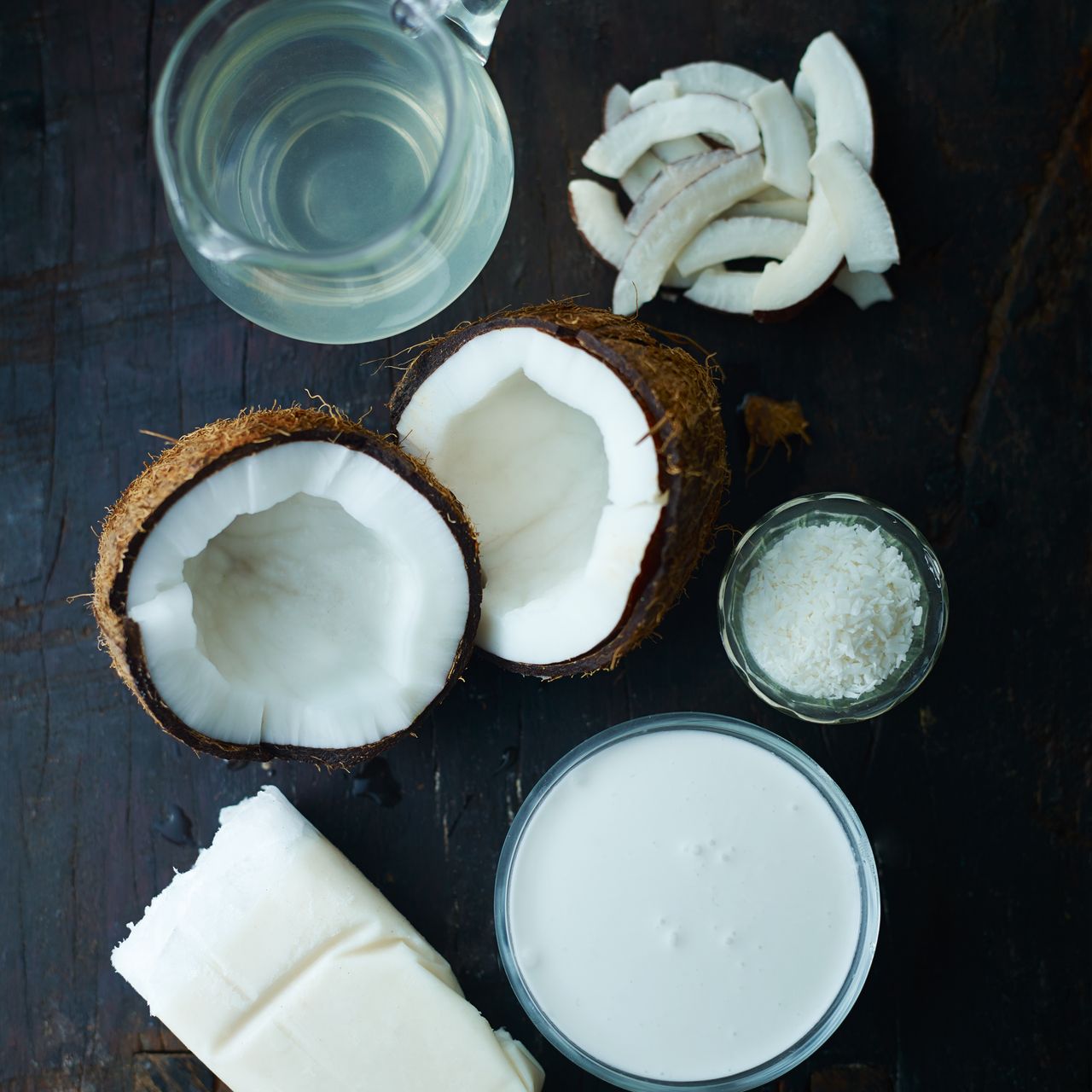Know coconut milk from coconut cream? When to use coconut oil? It's so versatile and on-trend for a healthy and balanced diet. Find out how best to cook with it for a healthier you, with our rundown of coconut in its many forms and what it's best for.
Coconut is high in saturated fat but it seems these plant fatty acids (medium-chain triglycerides, to be precise) are metabolised by the body differently to animal fats. Some studies state that they can even help in lowering blood cholesterol.
Coconuts are high in potassium, and are a good source of magnesium and other minerals, plus fibre, protein, and vitamins B, C and E.
Do remember though that fat is fat, whether it comes from butter, olive oil or coconut oil - it all contains the same amount of calories whether it's better for you or not, and it should all be consumed in moderation.
Intrigued by this superfood? Take a look at our coconut recipes collection for inspiration.
There are so many coconut products on the market now and all are readily available. It's a useful ingredient to have in your storecupboard, and offers both a vegan and vegetarian option to cooking.
Here's our easy guide to what's what.
1. Coconut water for rehydration
This is the newest kid on the block in the UK, now available in tetra paks (look for brands such as Vita Coco). It is the clear liquid found inside green coconuts, and is high in electrolytes, which means it makes you rehydrate quickly - faster than with water. It is also high in potassium, with no fat. Try it over ice or with a splash of fresh lime juice.
2. Dried coconut for snacking
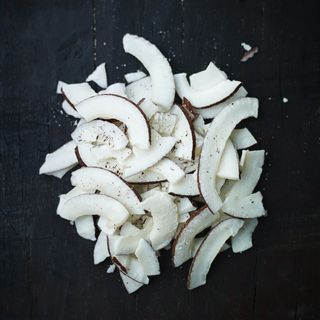
This is often sold in snack packs and is the dried flesh, but it's not as dry as the desiccated variety.
3. Coconut milk for dairy free options
The liquid extracted from the flesh, for use in curries and soups. It makes a dairy free alternative for smoothies too. Try making this dairy free Thai-style pork and coconut curry for a taste of the things you can do with coconut milk.
4. Coconut cream for cooking
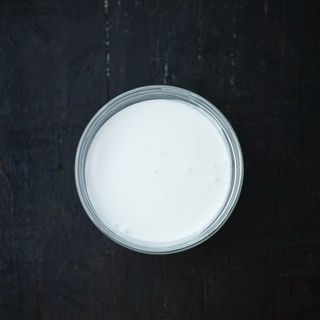
This contains less water than the milk but is used in similar ways. The block coconut is simply the milled coconut, which is then formed into a block - you can add a chunk to a curry at the end of cooking or you can rehydrate it in boiling water.
5. Coconut oil for frying (and beauty!)
Beloved by beauty editors for its super-moisturising powers for both skin and hair, it is also used in cooking, especially in South Indian and Sri Lankan dishes.
6. Desiccated coconut for baking
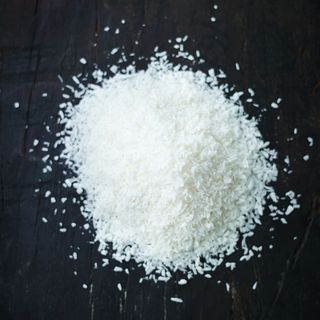
This is the dried and shredded flesh, often used in baking. Most supermarket brands are sweetened, but health food stores will sell unsweetened varieties. Our frosted peach and coconut cake is the perfect example of an inventive way with desiccated coconut.
-
 Chocolate and hazelnut roulade
Chocolate and hazelnut rouladeThis chocolate and hazelnut roulade comes with an optional Baileys Irish cream liqueur filling for an extra, festive twist
By Jen Bedloe Published
-
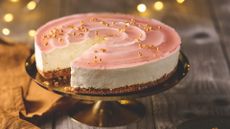 Baileys Cheesecake
Baileys CheesecakeThis no-bake Baileys cheesecake is so easy to make and perfect for cream liqueur lovers, plus it takes just 40 minutes to prepare
By Jess Meyer Published
-
 Chocolate torte with Baileys cream and salted praline
Chocolate torte with Baileys cream and salted pralineServe this rich Chocolate torte with Baileys cream and salted praline for a festive dessert that makes a popular alternative to Christmas pudding
By Jen Bedloe Published
-
 Chocolate and hazelnut roulade
Chocolate and hazelnut rouladeThis chocolate and hazelnut roulade comes with an optional Baileys Irish cream liqueur filling for an extra, festive twist
By Jen Bedloe Published
-
 Baileys Cheesecake
Baileys CheesecakeThis no-bake Baileys cheesecake is so easy to make and perfect for cream liqueur lovers, plus it takes just 40 minutes to prepare
By Jess Meyer Published
-
 Chocolate torte with Baileys cream and salted praline
Chocolate torte with Baileys cream and salted pralineServe this rich Chocolate torte with Baileys cream and salted praline for a festive dessert that makes a popular alternative to Christmas pudding
By Jen Bedloe Published
-
 Gwyneth Paltrow’s classic pinstripe pyjamas will keep you cool and comfortable on warm nights
Gwyneth Paltrow’s classic pinstripe pyjamas will keep you cool and comfortable on warm nightsChic and comfortable? Her stylish pyjama set is our new go-to
By Charlie Elizabeth Culverhouse Published
-
 Pistachio green is the pastel to wear in 2025 – do it with white shoes like Amanda Holden
Pistachio green is the pastel to wear in 2025 – do it with white shoes like Amanda HoldenThe soft green shade is perfect for spring
By Charlie Elizabeth Culverhouse Published
-
 Trinny Woodall's reveals her top beauty secret – and it works for everyone
Trinny Woodall's reveals her top beauty secret – and it works for everyone"Our fingers can do so much", says the entrepreneur
By Charlie Elizabeth Culverhouse Published
